About Us
UNIVERSIDAD ANTONIO NARIÑO (UAN, BOGOTÁ, COLOMBIA).
 UAN is a private, secular and comprehensive university, founded in 1976, with 32 campuses in 28 cities within Colombia, focused primarily on low-income students with limited access to public higher education. It serves 115,000 students and offers 141 Bachelor's degrees, 20 Master's degrees, 28 Advanced degrees and 4 PhD programmes.
UAN is a private, secular and comprehensive university, founded in 1976, with 32 campuses in 28 cities within Colombia, focused primarily on low-income students with limited access to public higher education. It serves 115,000 students and offers 141 Bachelor's degrees, 20 Master's degrees, 28 Advanced degrees and 4 PhD programmes.
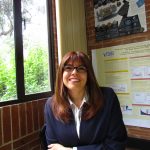 Academic Representative:
Academic Representative:
Gabriela Navarro
Gabriela is an Argentinean particle physicist working in Colombia since 2007. She is a full professor at UAN and a member of the ATLAS Collaboration at the LHC (Large Hadron Collider, at CERN) since 2007. She holds a PhD degree from Universidad de Buenos Aires (UBA), where she worked on polarised parton distribution functions of protons. Since 2007 she has worked in studies about trigger efficiency, electron identification, calibration and in different searches for signatures beyond the Standard Model in the ATLAS detector.
Areas of interest: Particle Physics beyond the Standard Model, Higgs Physics.
 UNIVERSIDAD INDUSTRIAL DE SANTANDER (UIS, BUCARAMANGA, COLOMBIA)
UNIVERSIDAD INDUSTRIAL DE SANTANDER (UIS, BUCARAMANGA, COLOMBIA)
UIS is a regional public university of the Department of Santander, with its main campus located in the city of Bucaramanga, Santander, Colombia. The university also has satellite campuses throughout the department in Barrancabermeja, Barbosa, Malaga, Piedecuesta and Socorro, with 22,000 students distributed in 44 undergraduate degrees, 50 master's degrees and 10 doctorates.
 Academic Representative:
Academic Representative:
Luis A. Núñez
Full professor at UIS, Bucaramanga, Colombia, since 2010. Full professor at ULA (Universidad de Los Andes, Merida, Venezuela, 1979-2009). Director of Information Technologies at ULA (1995-2009) and director of the National Centre for Scientific Computing of Venezuela (CeCalCULA,1999-2009). Professor Núñez has participated in several European cooperation projects with Latin America.
He is currently a member of the Latin American Giant Observatory Collaboration (LAGO), the Pierre Auger Observatory Collaboration and the Latin American Cooperation of Advanced Networks (RedCLARA).
Areas of interest: Astroparticle Physics, Relativistic Astrophysics and Information Technologies.
 UNIVERSIDAD SAN FRANCISCO DE QUITO (USFQ, QUITO, ECUADOR)
UNIVERSIDAD SAN FRANCISCO DE QUITO (USFQ, QUITO, ECUADOR)
USFQ is a private university founded in 1988. It has 9,200 students, distributed in 41 undergraduate programmes, 10 Master's programmes and one doctoral programme. USFQ is divided into 10 departments with several degree programmes each. Its College of Science and Engineering, “El Politécnico”, created in 1992, currently offers 12 undergraduate degrees, including Physics, Mathematics, Chemical Engineering, Electrical Engineering, Computer Science and Mechanical Engineering.
 Academic Representative:
Academic Representative:
Dennis Cazar
Dennis Cazar Ramírez, PhD, is since 2013 a full-time professor at USFQ, in Quito, Ecuador, where he teaches Physics and Electromagnetic Theory in the Department of Electrical Engineering. He also coordinates a research group within the Laboratory of Particles and Radiation Detection (LEOPARD) which aims to develop cosmic ray detectors for teaching and research purposes. Professor Cazar worked as a research engineer for Ericsson Lab Italy, developing high-tech electronics for telecommunication systems, in particular microwave links. Since 2013, when he joined the HEP World, he has been involved in several research projects to develop cosmic ray detector technology. Professor Cazar coordinates the hardware development group at the Latin American Giant Observatory Collaboration (LAGO) Collaboration, and is a member of the Beam Radiation Instrumentation and Luminosity (BRIL) subsystem operating within the CMS (Compact Muon Solenoid) Experiment at the Large Hadron Collider (LHC) at CERN. He is also an ultramarathon runner and amateur photographer.
 UNIVERSIDAD DE INVESTIGACIÓN DE TECNOLOGÍA EXPERIMENTAL YACHAY (UITEY, URCUQUÍ, ECUADOR)
UNIVERSIDAD DE INVESTIGACIÓN DE TECNOLOGÍA EXPERIMENTAL YACHAY (UITEY, URCUQUÍ, ECUADOR)
UITEY, also called Yachay Tech, is a public higher education institution founded in March, 2014. It has five schools: Biological Sciences and Bioengineering; Chemical Sciences and Engineering; Earth, Energy and Environmental Sciences; Mathematical and Computational Sciences; Physical Sciences and Nanotechnology. Each of them is made up of two departments, one focusing on Basic Sciences and the other on Technology and Engineering. Yachay has 2,000 students, 20 undergraduate degrees and 1 master's degree.
 Academic Representative:
Academic Representative:
Harold Yepes Ramírez
Principal Investigator at the KM3NeT Collaboration in Ecuador; member of the Latin American Strategy Forum for Research Infrastructure (LASF4RI) Preparatory Group and convenor of the Neutrino Working Group. Former collaborator in large-scale particle and radiation detection infrastructures in Western Europe and North America —NEXT, RD51, ANTARES, MINERvA (Main Injector Neutrino ExpeRiment to study v-A interactions). External advisor on nuclear and radiological matters for the Andean region —Research Nuclear Reactor IAN-R1, Secretariat for Control and Nuclear Applications (SCAN, Spanish acronym). Professor/researcher in Subatomic Physics.
Among the top 200 best engineers in Energy and Engineering in Europe 2012, according to Careers International, Brussels, Belgium. Active member of the Spanish Nuclear Society (SNE), Nuclear Youths (JJNN) and Spanish Society of Radiological Protection (SEPR).
Areas of interest: Experimental Particle Physics (Neutrino Physics, Astrophysics and Multimessenger Astronomy) and Applied Nuclear Physics (Nuclear Safety and Safeguards Systems).
 UNIVERSIDAD NACIONAL DE INGENIERÍA (UNI, LIMA, PERU)
UNIVERSIDAD NACIONAL DE INGENIERÍA (UNI, LIMA, PERU)
UNI is a public university established in 1876. It currently has 11 departments offering 29 degrees (mainly in engineering). One of them is the Department of Sciences (FC-UNI), which consists of 4 departments of Basic Sciences and 1 of Engineering (Chemistry, Mathematics, Physics, Computer Science and Physics Engineering). UNI has12,345 students and offers 45 bachelor's degrees, 52 master's degrees and 6 doctoral programmes.
 Academic representative:
Academic representative:
Javier Solano
Full Professor at UNI, Lima, Peru, since 2004. Visiting Professor at Centro de Investigación y de Estudios Avanzados (CINVESTAV)-Mérida Unit, Mérida, México (2002-2004). Former Professor at Universidade Federal de Itajubá, Itajubá, State of Minas Gerais, Brazil (1999-2002). Director of FC-UNI’s High Energy, Fields and Astrophysics Laboratory (LAECyA) since 2017. Coordinator of UNI’s master's in Computer Science since 2015.
Professor Solano has also participated in several national and international research cooperation projects.
He is currently an active member of the neutrino experiments at FERMILAB: Main Injector Neutrino ExpeRiment to study v-A interactions(MINERvA), since 2006, and Deep Underground Neutrino Experiment (DUNE), since 2016. In the past, he took part in the FERMILAB hadron production experiment E791 (1992-2001), the ALICE (A Large Ion Collider Experiment) experiment at the CERN (Conseil Européen pour la Recherche Nucléaire) V0 subdetector (2002-2004), and also as a fellow in the LAA-CERN muon detector experiment (1990-1991).
Areas of interest: High Energy Physics (Hadroproduction, Neutrino Physics, Cosmic Rays, Phenomenology) and Computer Science (Computational Physics, Machine Learning Applications).
 UNIVERSIDAD NACIONAL MAYOR DE SAN MARCOS (UNMSM, LIMA, PERU)
UNIVERSIDAD NACIONAL MAYOR DE SAN MARCOS (UNMSM, LIMA, PERU)
UNMSM, called The Elder University of America, established on May 12, 1551, was the beginning of the continent’s university history. Currently, UNMSM has 20 faculties, 66 undergraduate degrees and a population of more than 30,000 undergraduate students and 6,500 graduate students.
 Academic representative:
Academic representative:
Teófilo Vargas Auccalla
Professor at the UNMSM, Lima, Peru. Director of the Astronomy group Seminario Permanente de Astronomía y Ciencias Espaciales (SPACE). Head of the Theoretical Physics Research Group — GFT being its Spanish acronym.
Areas of interest: Gravitation and Cosmology, Astrobiology, High Energy Physics.
 UNIVERSIDAD CENTRAL DE VENEZUELA (UCV, CARACAS, VENEZUELA)
UNIVERSIDAD CENTRAL DE VENEZUELA (UCV, CARACAS, VENEZUELA)
UCV is a Venezuelan public university established in 1721. Its main campus is located in Caracas and it has two additional campuses in the cities of Maracay and Barquisimeto. UCV has 11 schools covering a wide range of areas of knowledge. Today it serves 60,000 students and offers 62 Bachelor's degrees, 115 Master's degrees and 41 PhD programmes.
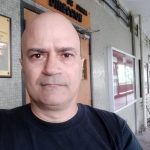 Academic Representative:
Academic Representative:
José Antonio López
Research professor, director of the School of Physics, professor in the Physics and Medical Physics postgraduate programmes at UCV.
Areas of interest: High-Energy Physics, Mathematical Physics, Radiobiology and Nuclear Physics in Medicine, Curricular Design and E-learning.
 UNIVERSIDAD SIMÓN BOLÍVAR (USB, CARACAS, VENEZUELA)
UNIVERSIDAD SIMÓN BOLÍVAR (USB, CARACAS, VENEZUELA)
USB is a public institution created in 1967, offering 3-year technical programmes, 5-year programmes in Basic Sciences and Engineering, and master's and doctoral programmes in the same areas. It also offers graduate programmes in Economics, Development Studies and related subjects. With 10,000 students, it has 36 Bachelor's, 31 Master's and 15 PhD programmes.
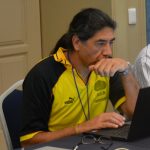 Academic representative:
Academic representative:
Jorge Stephany
Full Professor of Physics at USB, Caracas, Venezuela, since 1998. Previously, he was associate professor (1990-1998) He received his B.Sc. and M.Sc. degrees in Physics from the USB and his PhD degree in Science from the Centro Brasileiro de Pesquisas Físicas (CBPF), Rio de Janeiro, in 1989. Professor Stephany was a postdoctoral fellow at the Pontifícia Universidade Católica de Rio de Janeiro (1989-1990) and at the CBPF (1995-1996), a regular associate at the Abdus Salam International Centre for Theoretical Physics (ICTP, Trieste, 1996-2004), a visiting professor at the University of Warwick (2003-2004) and a visiting researcher at the Max Planck Institute for Gravitational Physics (AEI-Potsdam, 2010-2011). He currently coordinates the postgraduate and undergraduate programmes in Physics at the USB and he is President of the Venezuelan Society of Physics.
Areas of interest: Quantum Field Theory, Relativistic Physics and Open Quantum Systems]
 UNIVERSITÉ DE PARIS CITÉ (UPC, PARIS, FRANCE)
UNIVERSITÉ DE PARIS CITÉ (UPC, PARIS, FRANCE)
This institution covers a wide range of disciplines, with one of the most comprehensive and ambitious academic offerings available in the world. Created in 2019 from the merger of the universities Paris Diderot, Paris Descartes and the Institut du physique du globe de Paris, UPC’s ambition is to lead and to develop an exceptional potential to meet the challenges of tomorrow's society.
 Academic representative:
Academic representative:
José Ocariz
French-Venezuelan experimental particle physicist, full professor at UPC; researcher at the Institut national de physique nucléaire et de physique des particules (IN2P3). He was an undergraduate student at ULA (Venezuela) and at the Abdus Salam International Center for Theoretical Physics in Trieste (ICTP, Italy). He holds a PhD in physics from the Université Paris Sud, Orsay (France). He was a research fellow at the Conseil Européen pour la Recherche Nucléaire (CERN,1999-2000) and a CNRS junior researcher based at the National Accelerator Laboratory, formerly Stanford Linear Accelerator Centre (SLAC), Stanford, U.S.A (2003-2005).
For several years he studied CP violation, that is, the differences between matter and antimatter.
As a former member of the NA48, LHCb and BaBar collaborations and of the CKMfitter team, he contributed to several experimental results that led to the validation of the Cabibbo-Kobayashi-Maskawa (CKM) Matrix as a source of particle-antiparticle asymmetries in the Standard Model of fundamental interactions.
Since 2009, Professor Ocariz has been a member of the ATLAS experiment at CERN’s Large Hadron Collider (LHC). He actively contributed to the discovery of the Higgs Boson in 2012 and now is interested in understanding the properties of the Higgs field and in the search for New Physics beyond the Standard Model. He has also participated in several international scientific cooperation programmes, in particular between France and Latin America. He is a diehard frequentist when he does science and a Bayesian when he has to make decisions.
 Academic representative:
Academic representative:
Marco Bomben
Italian experimental particle physicist, junior lecturer (Maître de Conférences) at the Université de Paris Cité (UPC) and researcher at Institut national de physique nucléaire et physique des particules (IN2P3) since 2014. He was an undergraduate student at the Università degli Studi di Trieste (Italy), where he earned a degree in 2007 with a PhD in Physics analysing data from the BaBar experiment. He was a postdoc at the Università degli Studi di Trieste (2007-2010) and then at the Laboratoire de Physique Nucléaire de Hautes Énergies, LPNHE (2010-2014).
In 2010 he joined the ATLAS collaboration at the Large Hadron Collider (LHC). Since then, he has worked on the development of the silicon tracking detector for the LHC’s High Luminosity phase (HL-LHC).
Professor Bomben shares his time between research and teaching, and he enjoys spending time with students, placing their progress as a top priority.
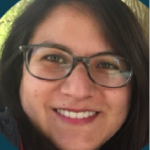 Academic representative:
Academic representative:
Andrea Grijalva
She has experience working in international cooperation, international relations and diplomacy, as well as in administrative management of European projects of the URBACT III (a European exchange and learning programme promoting sustainable urban development) and Erasmus Mundus networks, and also as a translator for the United Nations High Commissioner for Refugees (UNHCR, Quito,Ecuador).
Areas of interest: International cooperation in Latin America, multilateralism and international project management.
 UNIVERSITÉ TOULOUSE III-PAUL SABATIER (UPS, TOULOUSE, FRANCE)
UNIVERSITÉ TOULOUSE III-PAUL SABATIER (UPS, TOULOUSE, FRANCE)
UPS is part of the Université de Toulouse. It aims to provide top-quality higher education programmes in Science, Health, Sport, Engineering and Technology. It is home to more than 31,000 students in undergraduate and graduate programmes, offering 88 bachelor's degrees (including the so-called Licence Pro, short certificate programme), 46 master's programmes and 12 doctoral programmes.
 Academic representative:
Academic representative:
Pierre Pujol
Full professor at the UPS and member of its Laboratoire de Physique Théorique (LPT) since 2006. He was an undergraduate student at Venezuela’s USB and obtained his PhD at the Université de Paris VI, Pierre et Marie Curie. He was a postdoctoral fellow at the Scuola Internazionali Superiori di Studi Avanzati (SISSA) from 1996 to 1998, became a professor at the Ecole Normale Supérieure de Lyon (ENS-Lyon) in 1998 and was a visiting scholar at Boston University from 2002 to 2003.
His field of research focuses on quantum theory and field statistics applied to statistical physics and condensed matter, and more specifically, to strongly correlated electronic systems, frustrated magnetism and topological states of matter.
 TECHNISCHE UNIVERSITÄT DRESDEN (TUD, DRESDEN, GERMANY)
TECHNISCHE UNIVERSITÄT DRESDEN (TUD, DRESDEN, GERMANY)
TUD is one of the leading universities in Germany, recognized by the Federal Government as a University of Excellence, according to the Excellence Initiative. TUD has approximately 34,000 students, and as a full-curriculum university, it has 18 faculties and offers 129 bachelor's and 24 master's degree programmes.
 Academic representative:
Academic representative:
Joany Manjarrés
Joany Manjarrés is an experimental particle physicist. She has been a postdoctoral researcher at the Dresden University of Technology (TUD) since 2017. She was an undergraduate student at ULA, Venezuela, and at Université Paris Sud, Orsay, France (now Université Paris-Saclay). She graduated with a PhD in Physics from Université Paris Diderot (now Université de Paris Cité) in 2013.
Since 2010, she has been a member of the ATLAS Experiment at CERN’s Large Hadron Collider (LHC). Her research focuses on the understanding of the electroweak sector of the Standard Model, performing diboson measurements, and on the search for New Physics beyond the Standard Model.
Areas of interest: Particle physics, Electroweak physics, Effective Field Theory and detector development.
 ICTP (TRIESTE, ITALY)
ICTP (TRIESTE, ITALY)
For more than 50 years, the Abdus Salam International Center for Theoretical Physics (ICTP) has been a driving force behind global efforts to boost science in the developing world. Founded in 1964 by the late Nobel Laureate Abdus Salam, ICTP seeks to fulfil its mandate by providing scientists in developing countries with the continuing education and skills they need to enjoy long and productive careers. ICTP has been a major force in stemming the scientific brain drain from the developing world. ICTP alumni serve as professors at leading universities, chairs of academic departments, directors of research centres and ministers of science and technology in nations throughout the developing world. Many have been recognized in their own countries and internationally for their contributions to science and science policy. ICTP's impact extends far beyond the Center's facilities to virtually every corner of the Earth.
Associate Representative: Bobby Samir Acharya
 CERN (SWITZERLAND)
CERN (SWITZERLAND)
The European Organisation for Nuclear Research, known as CERN (short for Conseil Européen pour la Recherche Nucléaire), is a European research organisation that operates the world's largest particle physics laboratory. Established in 1954, the organisation is based in a suburb northwest of Geneva, on the French-Swiss border, and has 23 member states. CERN's main role is to provide particle accelerators and other infrastructure needed for high-energy physics research. As a result, numerous experiments have been conducted at CERN through international collaborations. Its main site at Meyrin houses a large computing facility, which is used primarily to store and analyse data from experiments, as well as to simulate events. Researchers need remote access to these facilities, so the laboratory has historically been an important hub for a wide-area network. CERN is also the birthplace of the World Wide Web.
Associate Representative: Salvatore Mele
 CENTRE NATIONAL DE LA RECHERCHE SCIENTIFIQUE (CNRS, FRANCE)
CENTRE NATIONAL DE LA RECHERCHE SCIENTIFIQUE (CNRS, FRANCE)
CNRS is among the world's leading research institutions. It is organised into ten national institutes. IN2P3 (Institut National de Physique Nucléaire et de Physique des Particules / National Institute of Nuclear Physics and Particle Physics) is the institute in charge of experimental HEP (High Energy Physics) at CNRS. IN2P3 has 19 laboratories and 13 technological and research platforms throughout most of France. All IN2P3 laboratories are joint structures with one or more universities as partners. LPNHE (Laboratoire de Physique Nucléaire et des Hautes Énergies / Nuclear and High-Energy Physics Laboratory) is one of the two IN2P3 laboratories in central Paris. It specialises in Experimental HEP at colliders (with strong team members from the ATLAS and LHCb experiments at the LHC), Astroparticle Physics and Cosmology. LPNHE is a member of the Université Paris Diderot and the Sorbonne Université.
 Associate representative:
Associate representative:
Reina Camacho Toro
She is a Venezuelan experimental particle physicist working at CNRS since 2018 and a member of the LHC ATLAS collaboration at the Conseil Européen pour la Recherche Nucléaire (CERN) since 2009. Dr. Camacho was an undergraduate student at Universidad de Los Andes (ULA, Venezuela). She received her PhD degree in physics from Université Blaise Pascal (Clermont-Ferrand, France) in 2012. She was a postdoctoral research fellow at the Université de Genève (Geneva, Switzerland) between 2013 and 2015 and at the University of Chicago (Illinois, USA) between 2015 and 2017.
She splits her time between data analysis in order to understand the smallest components of matter, instrumentation R&D, and science-capacity building programmes aspiring to piece together the next generation of scientists in Latin America. She is an advocate for virtual research and learning communities as a way to strengthen scientific ties between developed and developing countries and modernise the education system.
The Deutsches Elektronen-Synchrotron, commonly known by the acronym DESY, is a national research centre in Germany that operates particle accelerators used to investigate the structure of matter. It carries out a broad spectrum of interdisciplinary scientific research in three main areas: Particle and High-Energy Physics, Photon Science and the development, construction and operation of Particle Accelerators. Its name refers to its first project, an electron synchrotron. DESY is publicly funded by the Federal Republic of Germany, the States of Germany and the German Research Foundation (DFG). It is a member of the Helmholtz Association and has sites in Hamburg and Zeuthen.
 Associate Representative:
Associate Representative:
James Ferrando
He is a British experimental particle physicist and staff scientist at the Deutsches Elektronen-Synchrotron (DESY) in Hamburg (Germany). Dr. Ferrando graduated from Oxford University and also completed his PhD in Particle Physics there. He was a postdoctoral researcher at the University of Glasgow (2003-2007, 2011-2016) and at the University of Oxford (2007-2011), having spent time at DESY (2003-2007).
He has been a member of the ZEUS collaboration since 2001, studying proton structure measurements and searching for new physics using deep-inelastic scattering data from electron-proton collisions. Since 2009 he has been a member of the ATLAS collaboration, studying top-quark production and has played a leading role in the ATLAS search for new physics in top-quark events during Run 1 (2009-2013) of the Large Hadron Collider (LHC) and at the beginning of Run 2 (2015).
His main current research interests are precise experimental tests of Quantum Chromodynamics (QCD) and proton structure measurements with LHC data. He is also interested in the phenomenology of particle physics, especially in QCD fits to extract parton distribution functions, and in global fits of top quark measurement data to constrain new physics via effective field theory. As a European physicist with Peruvian roots, he is delighted to participate in the LA-CoNGA capacity building project.
 IRFU (FRANCE)
IRFU (FRANCE)
The Institute of Research into the Fundamental Laws of the Universe, part of the Fundamental Research Division at CEA (the French Alternative Energies and Atomic Energy Commission), brings together three scientific disciplines: Astrophysics, Nuclear Physics and Particle Physics, as well as all the associated technological expertise. IRFU is positioned to answer the main questions we face in understanding the four fundamental interactions at different scales, from the smallest (matter’s building blocks, nuclear matter) to the largest (the Universe’s energy content and structure). This research requires the processing of large volumes of data, as well as expertise in the use of complex simulation tools. IRFU also takes part in the development and operation of GANIL (Large National Heavy Ion Accelerator), a very large research infrastructure, through a CEA-CNRS EIG. (Economic Interest Grouping) The Institute's technological position is aimed at developing the instruments necessary for this research (accelerators, magnets, detectors, electronics, engineering systems). These developments, carried out in close collaboration with industry, go far beyond the two-infinity physics scientific community, and the institute is being called upon for its technologies by other scientific communities at the heart of CEA. Its goal is to exploit its developments for a variety of societal applications.
 Associate Representative:
Associate Representative:
Bruno Lenzi
He received his B.Sc. and M.Sc. degrees from the Universidade de São Paulo (Brazil) and his PhD degree from the Université Paris-Sud Orsay (France) in 2010. As a researcher at the Conseil Européen pour la Recherche Nucléaire (CERN) and member of the ATLAS collaboration staff at the Large Hadron Collider, he contributed to the discovery and studies of the Higgs boson, to the search for new phenomena, and to software and detector projects.
Since 2018, he has been a researcher at CEA (the French Alternative Energies and Atomic Energy Commission) in Paris-Saclay, France. He shares his time between machine learning, the Compact Muon Solenoid (CMS) experiment’s operations and upgrade projects at the LHC, and occasionally some exciting educational projects such as LA-CoNGA physics.
Known as the only company in the world to offer a complete range of high/low voltage power supply systems and front-end/data acquisition modules that meet IEEE standards for nuclear and particle physics, CAEN SpA’s extensive research and development capabilities enabled it to play an important long-term role in this field. CAEN's activities have always been at the cutting edge of technology, thanks to years of intense collaborations with the most important research centres in the world.
Frontier X Analytics has developed an open analysis platform that aims to support the data monetization lifecycle in a swift manner, from exploratory data analysis to streaming analytics.
Leading software and consulting organisation in Latin America.
As Latin America’s advanced network, it is a space of collaboration and development for education, science and innovation. Since 2004, RedCLARA provides regional interconnection and global connection through its links to GÉANT (pan-European advanced network) and Internet2 (United States) and, through them, to the advanced networks of Africa (UbuntuNet Alliance, WACREN, ASREN), Asia (APAN, TEIN, CAREN) and Oceania (AARNet), among others. RedCLARA interconnects the National Research and Education Networks (NRENs) of the Latin American countries, thereby forming the largest academic community in Latin America, actively connected and working on multiple projects with international peers.
CEVALE2 (Virtual Centre for High Energy Studies) is an initiative whose goal is to strengthen educational outreach, academic training and research in the area of High Energy Physics (HEP). Originally created to reach the Venezuelan academic community, it has now expanded to several Latin American countries. CEVALE2VE brings together Venezuelan, Colombian, Peruvian and Mexican scientists involved in international collaborations in the field of HEP, detector development and computer science.
It is the third oldest scientific society in the United States. As an independent, non-profit organisation with more than 25,000 members in 140 countries, the Academy's mission is to advance the understanding of science and technology. It singles out and promotes scientific and professional advancement across disciplines without geographic boundaries, builds bridges and enables synergies between institutions and individuals. It contributes to broadening scientific knowledge by convening leading experts in the context of meetings and seminars, as well as interdisciplinary conferences, and by disseminating information through print and electronic media. The current president of the Academy is John Sexton, president of New York University.
It is a non-profit association that has been working for 45 years toward the development of science, technology and research in Colombia.
 José Ocariz (Europe)
José Ocariz (Europe)
He is a French-Venezuelan experimental particle physicist, full professor at the Université de Paris and researcher at the Institut national de physique nucléaire et physique des particules (IN2P3). He was an undergraduate student at ULA (Venezuela) and at the Abdus Salam International Centre for Theoretical Physics in Trieste (Italy). He has a PhD in physics from the Université Paris Sud, Orsay (France), was a research fellow at the Conseil Européen pour la Recherche Nucléaire (CERN, 1999-2000) and a junior researcher at the Centre National de la Recherche Scientifique (CNRS), based at the National Accelerator Laboratory, formerly Stanford Linear Accelerator Centre (SLAC), Stanford (2003-2005).
For several years he studied CP (Charge-Parity)violation, i.e., the differences between matter and antimatter. As a former member of the NA48, LHCb and BaBar collaborations and the CKMfitter team, he contributed to several experimental results that led to the validation of the Cabibbo-Kobayashi-Maskawa (CKM) Matrix as a source of particle-antiparticle asymmetries in the Standard Model of fundamental interactions.
Since 2009, Professor Ocariz has been a member of the ATLAS experiment at CERN’s Large Hadron Collider (LHC). He actively contributed to the discovery of the Higgs Boson in 2012 and is now interested in understanding the properties of the Higgs field and in the search for New Physics beyond the Standard Model. He has also participated in several international scientific cooperation programmes, in particular between France and Latin America. He is a diehard frequentist when he does science and a Bayesian when he has to make decisions.
 Reina Camacho Toro (France)
Reina Camacho Toro (France)
She is a Venezuelan experimental particle physicist working at the Centre National de la Recherche Scientifique (CNRS) since 2018 and a member of the Large Hadron Collider (LHC) ATLAS collaboration at the Conseil Européen pour la Recherche Nucléaire (CERN) since 2009. Dr. Camacho was an undergraduate student at Universidad de Los Andes (ULA, Venezuela). She received her PhD degree in physics from Université Blaise Pascal (Clermont-Ferrand, France) in 2012. She was a postdoctoral research fellow at the Université de Genève (Geneva, Switzerland) between 2013 and 2015 and at the University of Chicago (Illinois, USA) between 2015 and 2017.
She splits her time between data analysis to understand the smallest components of matter, instrumentation R&D, and science-capacity building programmes in order to piece together the next generation of scientists in Latin America. She is an advocate for virtual research and learning communities as a way to strengthen scientific ties between developed and developing countries and modernise the education system.
 Andrea Grijalva (Francia)
Andrea Grijalva (Francia)
She has experience working in international cooperation, international relations and diplomacy, as well as in administrative management of European projects of the URBACT III (a European exchange and learning programme promoting sustainable urban development) and Erasmus Mundus networks, and also as a translator for the United Nations High Commissioner for Refugees (UNHCR, Quito, Ecuador).
Areas of interest: International cooperation in Latin America, multilateralism and international project management.
 Luis A. Núñez (Latin America)
Luis A. Núñez (Latin America)
Full professor at Universidad Industrial de Santander (UIS, Bucaramanga, Colombia), since 2010. Full professor at ULA (Universidad de Los Andes, Mérida, Venezuela, 1979-2009). Director of Information Technologies at ULA (1995-2009) and director of the National Centre for Scientific Computing of Venezuela (CeCalCULA,1999-2009). Professor Núñez has participated in several European cooperation projects with Latin America.
He is currently a member of the Latin American Giant Observatory Collaboration (LAGO), the Pierre Auger Observatory Collaboration and the Latin American Cooperation of Advanced Networks (RedCLARA).
Areas of interest: Astroparticle Physics, Relativistic Astrophysics and Information Technologies.
 María Teresa Dova
María Teresa Dova
Full Professor at the Universidad Nacional de la Plata (UNLP) and Senior Researcher at the National Scientific and Technical Research Council (CONICET, Argentina). She studied Physics at the UNLP, where she completed her PhD in 1988 with a dissertation on condensed matter. In 1989 she started her career in high energy physics as a postdoc at the L3 experiment at the Conseil Européen pour la Recherche Nucléaire (CERN). In 1993 she created the high energy experimental group at the Instituto de Física La Plata (UNLP-CONICET), which she has directed since then. She initiated and led the incorporation of the UNLP in the Pierre Auger Observatory (PAO) in 1995, and was Chair of the Collaboration Board (2001-2006). Professor Dova also led a joint effort in 2005 for the first-ever participation of high-energy groups from Argentina in a CERN experiment (ATLAS, of the Large Hadron Collider —LHC). Dova has published hundreds of papers on condensed matter, phenomenology of particle and cosmic ray physics, and data analysis with the L3, PAO and ATLAS experiment collaborations.
 Juan Carlos Basto Pineda (Universidad Industrial de Santander, UIS, Colombia)
Juan Carlos Basto Pineda (Universidad Industrial de Santander, UIS, Colombia)
Since 2017 he has been a Professor of Applied Physics and Mathematics at UIS, Bucaramanga (Colombia), and his main research interest is extragalactic astronomy. He completed his PhD in Science with emphasis on Astronomy at the Universidade de São Paulo (Brazil) in 2016, working with computer simulations of galaxies. He enjoys moving through the intersections between astronomy, mathematics and data science, and has spent time at different institutions in Chile, Germany and France through fully funded research internships (2011-2017). In the past, he was the leader of the Colombian team in several International Mathematical Olympiads (2006-2016). Science education and popularisation are other passions of his.
 Marco Bomben (Université de Paris, France)
Marco Bomben (Université de Paris, France)
Italian experimental particle physicist, junior lecturer (Maître de Conférences) at the Université de Paris (UP) and researcher at Institut national de physique nucléaire et physique des particules (IN2P3) since 2014. He was an undergraduate student at the Università degli Studi di Trieste (Italy), where he earned a PhD in Physics in 2007 analysing data from the BaBar experiment. He was a postdoc at the Università degli Studi di Trieste (2007-2010) and then at the Laboratoire de Physique Nucléaire de Hautes Énergies, LPNHE (2010-2014).
In 2010 he joined the ATLAS collaboration at the Large Hadron Collider (LHC). Since then, he has worked on the development of the silicon tracking detector for the LHC’s High Luminosity phase (HL-LHC).
Professor Bomben shares his time between research and teaching, and he enjoys spending time with students, placing their progress as a top priority.
 Werner Brämer-Escamilla (Yachay Tech, Ecuador)
Werner Brämer-Escamilla (Yachay Tech, Ecuador)
He has been a professor/researcher since 2017 at Universidad Yachay Tech (UITEY, Urcuquí, Ecuador), in the Faculty of Physical Sciences and Nanotechnology.
He received his BSc in Physics in 2001 from the Universidad de Carabobo (UC) and his PhD in 2008 from the Venezuelan Institute for Scientific Research (IVIC). Professor Brämer-Escamilla completed his postdoc at IVIC and then continued his work at the Condensed Matter Physics Laboratory until he became a Research Associate II-3 in 2017. His area of interest is in instrumentation physics applied to superconductivity, nanoparticles, molecular electronics and complex systems. He is also working on the development of micrometre and nanostructured devices. Professor Brämer-Escamilla has a strong interest in the development of new techniques and equipment for physics education.
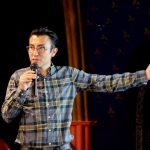 Edgar Carrera (Universidad San Francisco de Quito, Ecuador).
Edgar Carrera (Universidad San Francisco de Quito, Ecuador).
He is a physics professor and researcher at Universidad San Francisco de Quito (USFQ), in Ecuador, since 2011. He teaches physics courses for engineering and science. His main area of research is collider physics, especially the search for new fields and particles. After obtaining his PhD at Florida State University, working for the Tevatron D0 experiment at Fermilab, in 2009, professor Carrera moved to Geneva (Switzerland), where he worked as a postdoctoral associate with Boston University, mainly on the maintenance and operation of the CMS experiment’s high-level trigger system, right at the start of the Large Hadron Collider (LHC) project at the Conseil Européen pour la Recherche Nucléaire (CERN).
Upon returning to Ecuador in 2011, he worked for several years on trying to persuade the local institutes and the local funding agency to join CMS, which finally happened in 2016, with him as the CMS representative in Ecuador ever since. Professor Carrera is heavily involved in the Data Preservation and Open Access group (DPOA) at the CMS experiment, participates in the LAGO project for the study of cosmic rays and is very enthusiastic about outreach activities, such as the International Hands On Particle Physics Masterclasses and the local USFQ Science to the Rescue programme. He also contributes to regional science education and strategy initiatives such as the Latin American Strategy Forum for Research Infrastructure (LASF4RI) and LA-CoNGA. Professor Carrera describes himself as a "decent soccer player, a terrible guitar aficionado, and a very fond wine appreciator."
 Arely Cortés González (Humboldt Universität, Germany)
Arely Cortés González (Humboldt Universität, Germany)
She earned a BS in Engineering Physics from Tec de Monterrey, in Mexico, and a PhD in Particle Physics from the University of Illinois, at Urbana-Champaign. Professor Cortés is a former postdoc at the Universidad Autónoma de Barcelona’s Institute for High Energy Physics (2013-2016) and a Conseil Européen pour la Recherche Nucléaire (CERN) Fellow (2016-2019) for the ATLAS Experiment, and she is currently a senior postdoc at the Humboldt Universität zu Berlin. She has worked on dark matter searches with ATLAS and, more recently, on searches for Di-Higgs production at the Large Hadron Collider (LHC), and is always willing to contribute to high-energy physics education in Latin America.
 Mario Consenza (Yachay Tech, Ecuador)
Mario Consenza (Yachay Tech, Ecuador)
Professor at Universidad Yachay Tech (UITEY, Ecuador) since 2018. Former full professor at Universidad de Los Andes (ULA, Merida, Venezuela), where he founded and led a research group on chaos and complex systems for many years. He has supervised dozens of PhD, MS and BS theses and dissertations and has received several academic awards in Venezuela. Professor Conseza has been a visiting research fellow at several universities, was a Senior Associate of the Abdus Salam International Centre for Theoretical Physics (ICTP, Trieste, Italy) and is currently an Associate Member of the ICTP-SAIFR (South American Institute for Fundamental Research, São Paulo, Brazil).
Areas of interest: Chaos Theory, Sociophysics, Complex Systems.
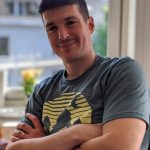 Sergio Díez-Cornell (DESY, Germany)
Sergio Díez-Cornell (DESY, Germany)
Spanish particle physicist and staff scientist at the Deutsches Elektronen-Synchrotron (DESY) in Hamburg (Germany). He was an undergraduate physics student at the Universidad de Zaragoza (Spain). In 2010 he completed his PhD in Physics at the Centro Nacional de Microelectrónica (IMB-CNM, CSIC —Spanish National Research Council—) and the Universitat Autònoma de Barcelona (UAB) in Barcelona (Spain). He was a postdoctoral researcher at the Lawrence Berkeley National Laboratory (LBNL), Berkeley (California, USA), from 2010 to 2014. Since 2014, he has been a staff scientist in the ATLAS group of the Particle Physics division of DESY.
He specialises in particle physics instrumentation and has been a member of the ATLAS Collaboration since 2010. His work includes the study of radiation effects in advanced microelectronics technologies, micro-channel cooling for particle detectors, the study of new composite materials for large-scale silicon detectors and, most recently, the design and construction of the new ATLAS internal microstrip tracker for the high-luminosity Large Hadron Collider (HL-LHC). He is also passionate about sports, science fiction novels, board games and listening to live music of all kinds.
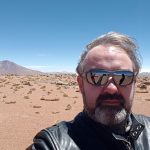 Jean-Christophe Hamilton (Centre National de la Recherche Scientifique, CNRS, France)
Jean-Christophe Hamilton (Centre National de la Recherche Scientifique, CNRS, France)
He is an observational cosmologist and Director of Research of the CNRS, at the Astroparticle and Cosmology (APC) laboratory in Paris. After a PhD devoted to the search for type Ia supernovae (1999), he worked at the CMB with Archeops and Planck until 2003, on ultra-high energy cosmic rays with the Pierre Auger Observatory and then returned to cosmology in 2006: Large-scale structure with SDSS-III/BOSS and CMB Polarisation with the Q&U Bolometric Interferometer for Cosmology (QUBIC). He is now also a member of the LiteBIRD collaboration.
He started working on the concept of bolometric interferometry for CMB polarization in 2006 and became the QUBIC project’s principal investigator in 2008. After many years of R&D, QUBIC was built at APC, Paris, in 2018, and in-lab calibration started in 2019. After successful validation of the concept, the instrument was shipped to its observation site in Argentina (near San Antonio de Los Cobres, Salta province) in 2021 and started operations after commissioning.
Jean-Christophe Hamilton splits his time between data analysis, simulations and instrumental design, as well as managing the QUBIC collaboration. He also teaches cosmology and data analysis at the Open University of Paris (mostly for retirees), as well as at the École Centrale/Supélec for future engineers.
 Ernesto Medina (Yachay Tech, UITEY, Ecuador)
Ernesto Medina (Yachay Tech, UITEY, Ecuador)
Senior Professor of the School of Physical Sciences and Nanotechnology at Universidad Yachay Tech (Ecuador) since 2016. Former Principal Researcher (1997-2016) of the Physics Centre at the Venezuelan Institute for Scientific Research (IVIC), and at the Universidad Central de Venezuela (UCV, Caracas, Venezuela). Director of the Physics Centre (2006-2008). He has been a Fulbright Scholar (2015-2016) at Arizona State University, and a visiting professor at Boston University, MIT and Université de Lorraine (France). He is a member of the South American Institute for Fundamental Research (SAIFR) and ACAL, and has recently been elected Fellow of the American Physical Society and is also currently Dean of the School of Physical Sciences and Nanotechnology at Universidad Yachay Tech (Ecuador).
Areas of interest: Condensed Matter Theory, Statistical Mechanics, Rock Physics.
 Diego Milanés (Universidad Nacional de Colombia, Colombia)
Diego Milanés (Universidad Nacional de Colombia, Colombia)
He has worked in High Energy Physics since 2004, first at the BaBar experiment at the National Accelerator Laboratory, formerly Stanford Linear Accelerator Center (SLAC), and since 2010 at the Conseil Européen pour la Recherche Nucléaire (CERN) LHCb experiment. He has been a full-time professor at Universidad Nacional de Colombia’s Physics Department since 2014.
He received his PhD in 2010 from the Universitat de Valencia (Spain), where he worked on the D0 mixing at the BaBar experiment. He went on to hold two postdoctoral positions, the first one at Istituto Nazionale di Fisica Nucleare (INFN) Sezione di Bari (2010-2012, Italy), focusing his work on heavy meson spectroscopy at LHCb, and then at the Laboratoire de Physique Nucléaire de Hautes Énergies (LPNHE, 2012-2014, France), where he worked on rare B decays and b > s transitions at LHCb. He currently leads the LHCb group at Universidad Nacional de Colombia, with interest in heavy baryon spectroscopy, Dalitz plot analysis of Ds and Bc physics.
 Jesús Peña Rodríguez (Universidad Industrial de Santander, UIS,Colombia)
Jesús Peña Rodríguez (Universidad Industrial de Santander, UIS,Colombia)
Electronic engineer graduated from the University of Pamplona (Colombia). He obtained his Master's degree in electronic engineering at the Universidad Industrial de Santander in the area of data processing using machine learning techniques. He is currently pursuing a PhD in physics at the Universidad Industrial de Santander, with a focus on particles and astroparticle detection. His doctoral research work consists in the development of the electronic system for the Muon Telescope (https://halley.uis.edu.co/fuego/), as well as its calibration and commissioning. He is also part of the LAGO (Latin American Giant Observatory) and Pierre Auger Observatory collaborations.
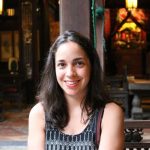 Camila Rangel-Smith (The Alan Turing Institute, UK)
Camila Rangel-Smith (The Alan Turing Institute, UK)
She has been a research data scientist at the Alan Turing Institute (UK) since 2018. She holds a PhD in Particle Physics from the Université Paris Diderot (2013), where she worked on the ATLAS experiment at the CERN Large Hadron Collider. During her PhD she took part in the discovery of the Higgs Boson particle, announced by the Conseil Européen pour la Recherche Nucléaire (CERN) in 2012. She continued working at ATLAS as a postdoctoral fellow for Uppsala University (Sweden, 2014-2016), where she focused on the search for physics beyond the Standard Model of particle physics. As a data scientist, she has worked on a variety of data and software projects, ranging from complex systems in economics and assessment practices in education, to the use of ecological remote sensing. She is passionate about open, interdisciplinary, and replicable research that creates public value.
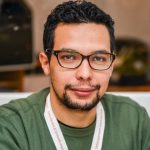 Arturo Sánchez Pineda (Centre National de la Recherche Scientifique, CNRS, France)
Arturo Sánchez Pineda (Centre National de la Recherche Scientifique, CNRS, France)
He is a CNRS postdoctoral fellow at the Laboratoire d'Annecy de Physique des Particules (LAPP, France). After his undergraduate studies in Physics and Systems Engineering at the Universidad de Los Andes (ULA, Mérida, Venezuela), he received his PhD in Fundamental and Applied Physics at the Università di Napoli Federico II (Italy). Previously he was a postdoctoral fellow at the Department of Physics of the Università di Udine and associate at the Istituto Nazionale di Fisica Nucleare (INFN), in Italy; administrator of the ATLAS Trigger & Data AcQuisition (TDAQ) system at the Conseil Européen pour la Recherche Nucléaire (CERN) in Switzerland and associate researcher in the high energy, cosmology and astroparticle section of the Abdus Salam International Centre for Theoretical Physics (ICTP) in Italy.
 Carlos Sandoval (Universidad Nacional de Colombia, UNAL, and Universidad Antonio Nariño, UAN, Colombia)
Carlos Sandoval (Universidad Nacional de Colombia, UNAL, and Universidad Antonio Nariño, UAN, Colombia)
He has worked in experimental particle physics since 2010, as part of the ATLAS collaboration at the Large Hadron Collider (LHC). He is currently a full-time professor at Universidad Nacional de Colombia’s Physics Department and part-time professor at Universidad Antonio Nariño (UAN, Colombia). He earned his PhD in 2009 at the University of Hamburg, where he worked on the production of single hadrons in deep inelastic scattering. Since 2010 he has worked on different searches for signatures beyond the Standard Model, jet substructure, pile-up mitigation and trigger developments in the ATLAS experiment. He is currently involved in projects for the ATLAS Phase-II upgrade and is interested in Higgs boson measurements with LHC data.
 Hernán Asorey (National Atomic Energy Commission, CNEA, Argentina)
Hernán Asorey (National Atomic Energy Commission, CNEA, Argentina)
He is a PhD in Physics from the Instituto Balseiro, Centro Atómico Bariloche (Argentina, 2012), Senior Researcher B at CNEA and Associate Professor at the Universidad Nacional de Río Negro and the Universidad Nacional de San Martín (Argentina). He returned to Argentina in 2015 after a postdoctoral stay at the Universidad Industrial de Santander (Bucaramanga, Colombia, 2013-2014). He currently serves as a researcher at the Medical Physics Department (after having been its director in 2017-2021) and at the Instituto de Tecnologías en Detección y Astropartículas (ITeDA). He is a member of the Pierre Auger Collaboration since 2004, and co-founder and member of the Latin American Giant Observatory (LAGO) Collaboration (having been PI in 2013-2016) and the ANDES Underground Laboratory. His lines of research are geared to the development of radiation detectors for space meteorology and muography, with applications in radiation damage, mining prospecting, structural stability and volcanic risk assessment, and medical diagnostics.
He is the author or co-author of more than 110 high-impact publications, alone or together with the collaborations in which he participates, and more than 70 lectures, 25 technical reports and a patent on neutron detection and its applications. He has received three awards for his teaching accomplishments, and is the author of an introductory physics textbook, Physics 1A - From Galaxies to Quarks. In recent years he has also been engaged in the development and implementation of blended teaching, research and collaboration techniques. Since 2013 he has directed four Master’s theses in Physics, seven Bachelor’s theses in Physics and one PhD dissertation, in three countries (Argentina, Colombia and Venezuela). He currently supervises two postdoctoral researchers and three doctoral students in Physics.
 Mayly Sánchez (Iowa State University, USA)
Mayly Sánchez (Iowa State University, USA)
She is an experimental particle physicist and professor of Physics and Astronomy at Iowa State University. Her research focuses on measuring the properties of neutrinos, subatomic particles that rarely interact with matter. She received her PhD in Physics from Tufts University (USA) studying atmospheric neutrinos.
Professor Sánchez was a postdoctoral fellow at Harvard University, where she led studies on how these particles change flavor in mid-flight using neutrinos generated in powerful accelerators outside Chicago. Before joining Iowa State University, she worked as a scientist at Argonne National Laboratory. In addition to studying neutrinos, she also works on the application of new photodetection technologies to particle physics experiments. For this work she was awarded a CAREER grant from the National Science Foundation and recognition from the Presidential Early Career Award for Scientists and Engineers (PECASE). She is a leader of the ANNIE experiment and has held several leadership positions in the NuMI Off-axis νe Appearance (NOvA) and DUNE (Deep Underground Neutrino) experiments, and a member of the APS and of the executive committee of APS’s Particles and Fields Division.
 Nicolás Bernal (Universidad Antonio Nariño, UAN, Colombia)
Nicolás Bernal (Universidad Antonio Nariño, UAN, Colombia)
Researcher at Universidad Antonio Nariño in Bogotá, Colombia. He is a physicist from Universidad del Valle (Colombia) with MSc and PhD degrees from the University of Paris (France). He has had multiple postdoctoral experiences at the universities of Barcelona (Spain), Lisbon (Portugal), Bonn (Germany) and ICTP-SAIFR (Abdus Salam International Centre for Theoretical Physics, Trieste, Italy-South American Institute for Fundamental Research, São Paulo, Brazil). His research focuses on particle physics beyond the standard model and cosmology. In particular, on the phenomenology of dark matter.
 Fernando Monticelli (Instituto de Física La Plata-IFLP/UNLP/CONICET, Argentina)
Fernando Monticelli (Instituto de Física La Plata-IFLP/UNLP/CONICET, Argentina)
An Argentine physicist working in experimental high-energy physics at the Instituto de Física La Plata (IFLP/UNLP/CONICET) in La Plata, Argentina. Dr. Monticelli has been a member of the ATLAS collaboration at LHC/CERN since 2006. He completed his master’s thesis in physics at the Universidad de Buenos Aires (UBA) and graduated as PhD at IFLP in 2011 working on the tuning of the ATLAS photon triggers and studying their performance precisely for the (at the time ongoing) search for the Higgs boson in the diphoton channel. He is currently working closely on the software and performance of the ATLAS electron and photon triggers. He is also involved in the search for supersymmetry. In addition, he is involved in the preparations, design and research of the hardware for the ATLAS Phase II trigger upgrade towards the high-luminosity Large Hadron Collider (HL-LHC).
 Josefina Alconada (National Scientific and Technical Research Council, CONICET, Argentina)
Josefina Alconada (National Scientific and Technical Research Council, CONICET, Argentina)
She is an Argentine experimental particle physicist working at CONICET since 2012 and a member of the ATLAS collaboration of the Conseil Européen pour la Recherche Nucléaire (CERN) Large Hadron Collider (LHC) since 2011. She graduated as a PhD in physics from the Universidad Nacional de La Plata (Argentina) in 2017, where she was later a postdoctoral research fellow until 2018. From 2018 until 2020 she was a postdoctoral researcher at Tel Aviv University (Israel) and she is currently working as a data scientist in SNAFU Records, Sweden, applying all her experience from her work at ATLAS.
During her PhD, she worked on the study of the Higgs boson spin in the diphoton channel and on the estimation of its cross section. For the last two years she has been the coordinator of the tau-lepton trigger and contributed to the development of a new algorithm for the ATLAS Level-1 trigger for Run 3.
 Francisco García (Helsinki Institute of Physics, Finland)
Francisco García (Helsinki Institute of Physics, Finland)
Engineer in Nuclear Physics and Master of Science from St. Petersburg Technical University (Russia, 1996). PhD in Plasma and Elemental Particle Physics (Russia, 2000). Researcher at the Helsinki Institute of Physics in Finland since 2003. Super-FRS (Super-conducting FRagment Separator) experiments at FAIR (Facility for Antiproton and Ion Research) and TOTEM at the Conseil Européen pour la Recherche Nucléaire (CERN), 2003-present).
 Alexander Martinez Mendez (Universidad Industrial de Santander, Colombia)
Alexander Martinez Mendez (Universidad Industrial de Santander, Colombia)
Alexander is a Computer Science professional specializing in Science Reproducibility. Their expertise includes developing innovative solutions for research data management. They played a key role in architecting and deploying the groundbreaking MiLab platform, co-created with RedCLARA and hosted by CEDIA.
 Communication coordination: Ysabel Briceño
Communication coordination: Ysabel Briceño
Journalistic work: Luz Bravo
Graphic design: María Eugenia Hernández
AV production: Yankady Rebolledo
Share this:
- Click to share on X (Opens in new window) X
- Click to share on Facebook (Opens in new window) Facebook
- Click to email a link to a friend (Opens in new window) Email
- Click to share on Reddit (Opens in new window) Reddit
- Click to share on Telegram (Opens in new window) Telegram
- Click to share on WhatsApp (Opens in new window) WhatsApp


 CAEN SpA
CAEN SpA  Frontier X Analytics
Frontier X Analytics DBAccess
DBAccess RedCLARA
RedCLARA CEVALE2VE
CEVALE2VE New York Academy of Sciences
New York Academy of Sciences AvanCiencia
AvanCiencia